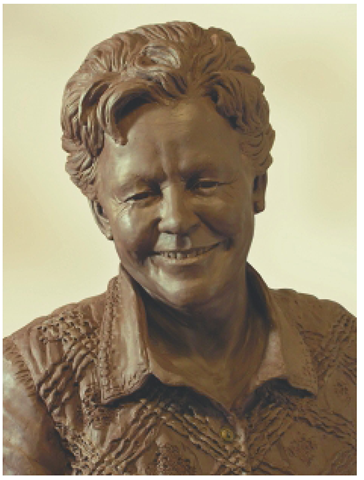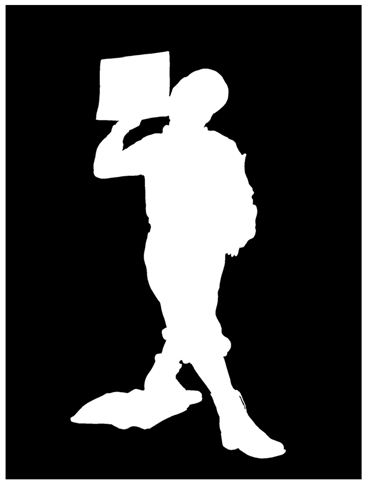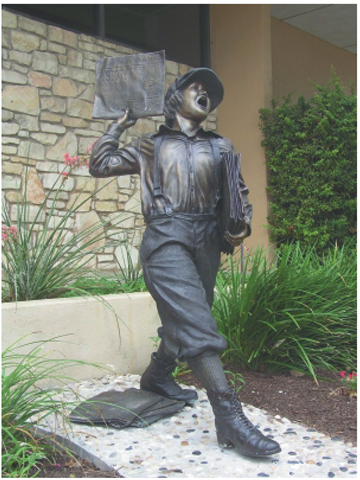Form
Form encompasses the overall shape and composition of the sculpture. The form of your sculpture is perceived by how light, shadows, and the transitions in between are created by the underlying shapes. This interplay of light and shadow is often referred to as the value. By manipulating how the shapes on your sculpture relate to one another, you control how highlights, transitions, and shadows are formed, thus creating interest and mood in the composition. Ultimately, form is often dictated by your own style, the medium, and the final use of the work.
FIG 1.6 The Interplay of Light and Shadows on the Surface of a Sculpture Dictates Its Perceived Form.
Form is intimately tied to proportions because basic forms correspond to the initial proportions of the sculpture. Forms can also be broken down into planes. For example, the basic form of the head can be reduced to a few planes such as the forehead, nose, brow, nose, chin, and so on. By reducing the sculpture to its corresponding planes, it is easy to see the relationships between forms and proportions (Figure 1.6).
Negative Space
An important but often overlooked aspect of form is the negative space. Negative space is the space around and between a part of the subject or even the entire subject. For example, when sculpting an arm, you would focus on the shapes created by the negative space between the arm and the body.
By also focusing on the negative space while sculpting, you can avoid being distracted by the details and anticipate problems such as incorrect proportions. In Mudbox, you can view the negative space around your sculpture by displaying it as a silhouette (Figure 1.7).
FIG 1.7 Negative Space is Useful in Preventing Problems with Proportions and Form.
Gesture
Gesture refers to the flow of lines in the figurative sculpture. More precisely, gesture describes the rhythm, weight, and balance in the design of the sculpture. Gesture is what makes a perfectly still sculpture appear to be alive and in motion.
FIG 1.8 Establishing Gesture Early In the Process Ensures an Appealing Sculpture that Has Motion and Balance. In This Photograph, You Can See the Lines that Establish Its Gesture.
From the initial sculpting stages, gesture must be incorporated into the process because ignoring it will result in a stiff, lifeless sculpture. Some sculptors begin creating gesture by shaping the armature before any clay is applied. In this way, a strong gesture is ensured from the start (Figure 1.8).
Unlike anatomy or forms, which are tangible things, gesture is an abstract concept. Unfortunately, this can make gesture difficult to master. However, you can develop a sense of gesture by practicing with gesture sculptures and drawings. Gesture sculptures are loose quick sketches in clay that lack detail but capture the motion and rhythm of the subject. Equally, gesture drawings are also very loose quick studies that do not focus on the details but rather focus on the impression or movement of the subject. In either case, quick gesture sculptures and drawings help you to get a feel for motion, balance, and rhythm in composition. Good gesture sculptures and drawings tell a story, evoke emotion, and show expression.



